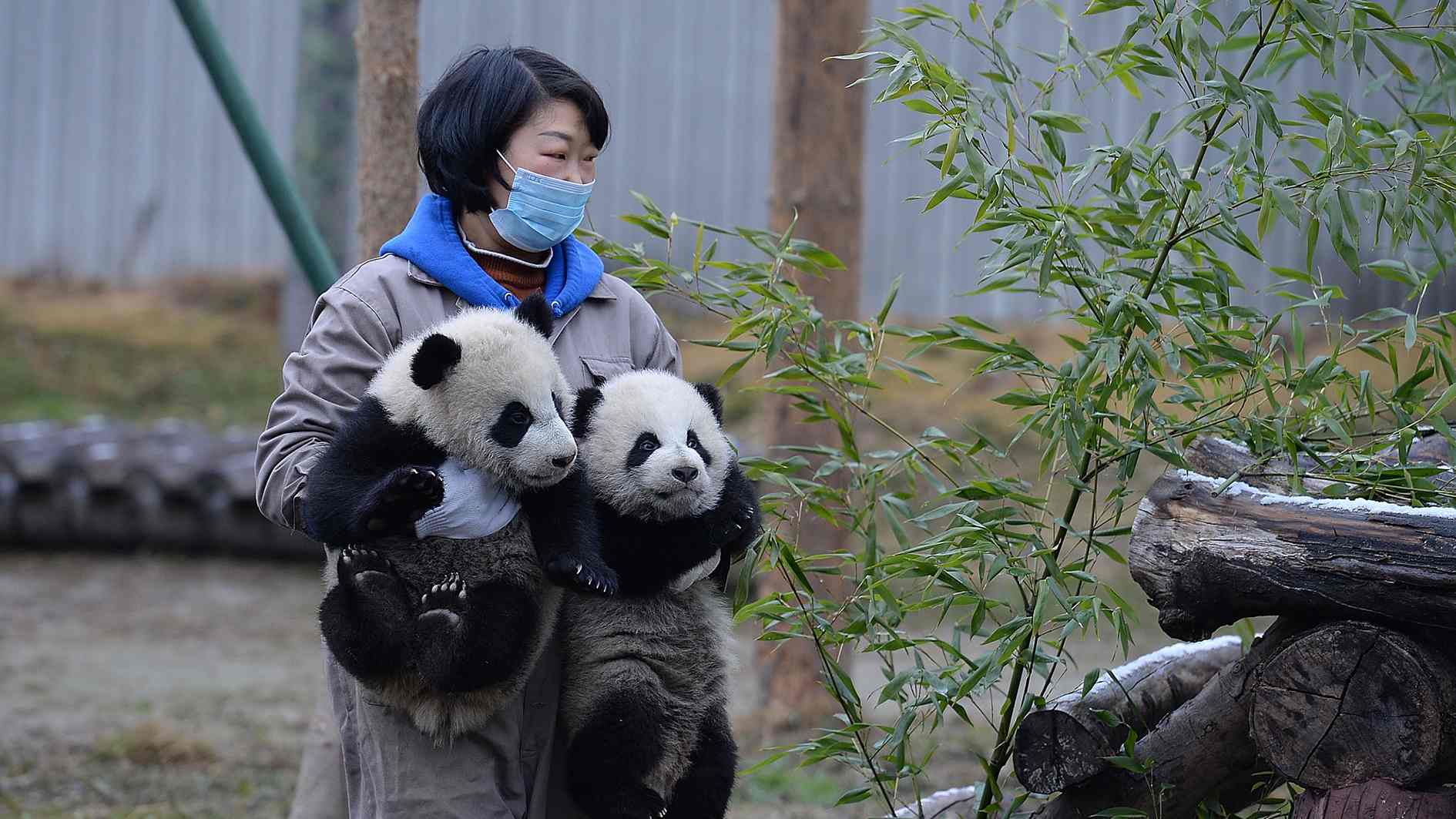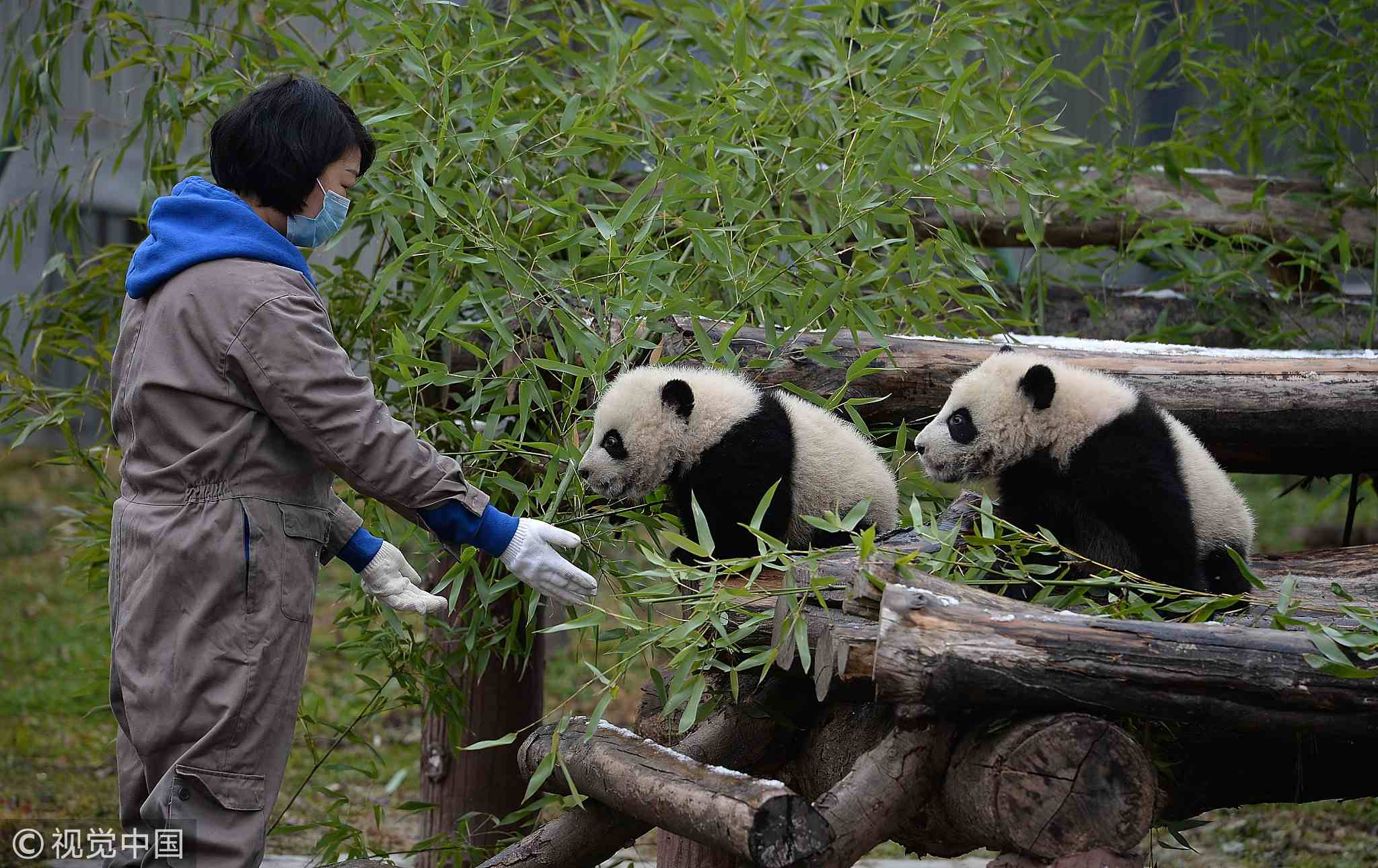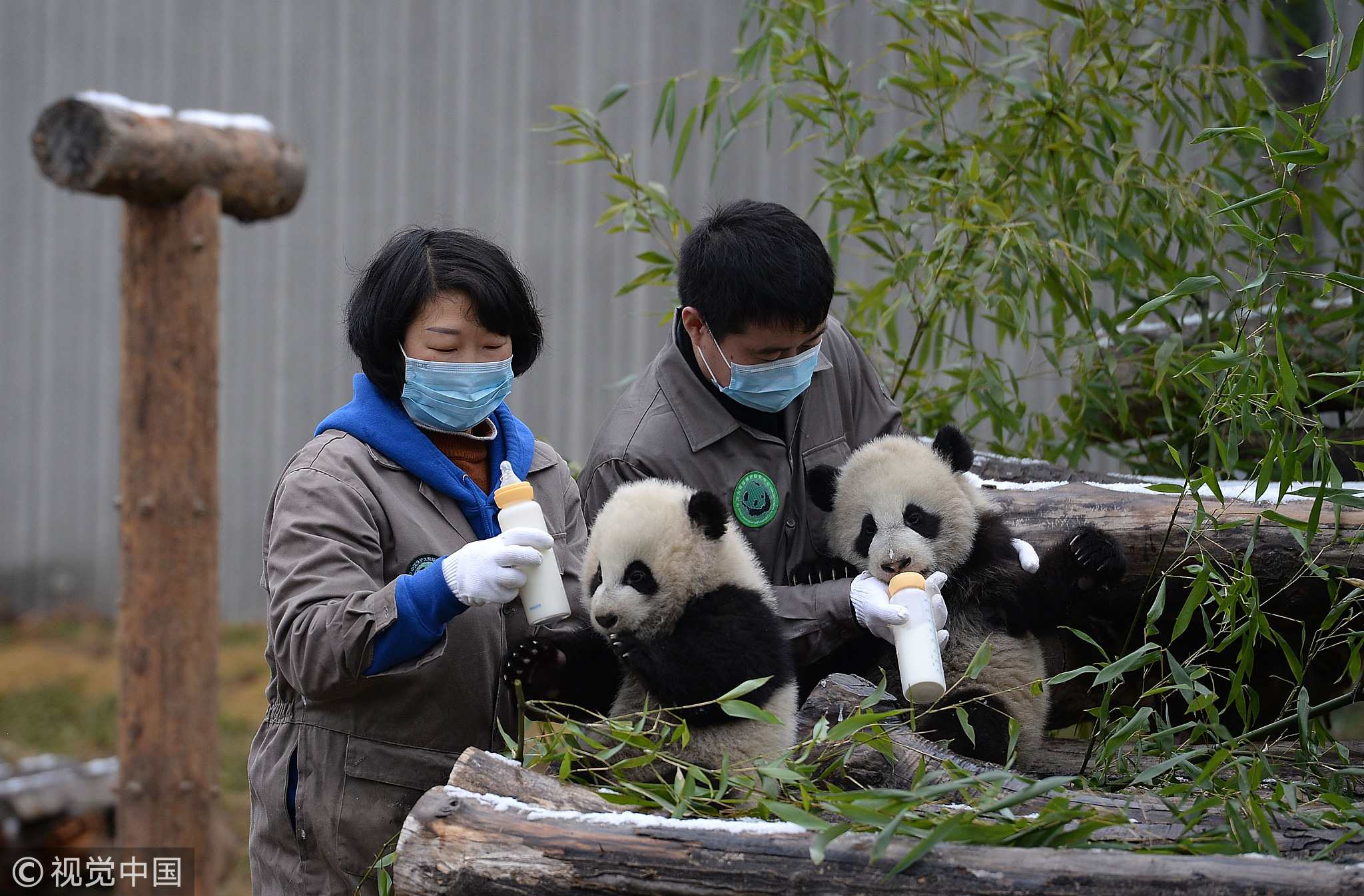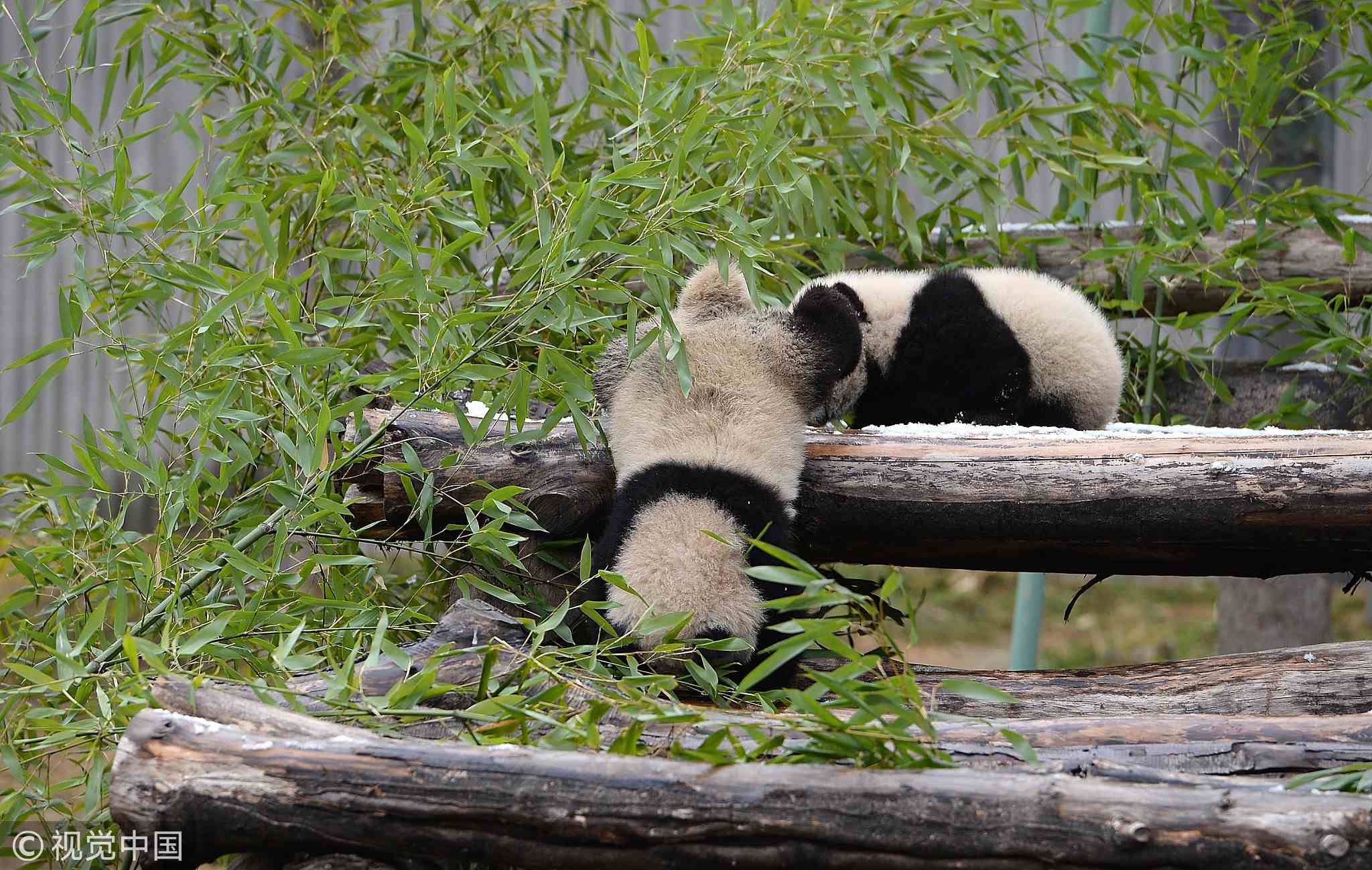
Nature
11:37, 27-Dec-2018
Pigeon-pair twin pandas make debut in Chengdu
Updated
11:37, 30-Dec-2018
CGTN
00:59

A pigeon pair of twin giant panda cubs debuted on Wednesday in Chengdu City, southwest China's Sichuan Province.

The pigeon-pair twin panda cubs are given abundant bamboo leaves. /VCG Photo
The pigeon-pair twin panda cubs are given abundant bamboo leaves. /VCG Photo
Named after characters in two popular panda cartoons, the twin brother and sister pandas are called "He He" and "Mei Mei", meaning “harmonious” and “beautiful” in Chinese. They were born in July at a research center in Wolong after their captive mother Cao Cao mated with a wild panda.
"He He and Mei Mei are both in good shape now. They finish their prepared milk very quickly every time they are fed with it. They both have a good appetite, and are very active, always crawling around in their house. Generally speaking, the two pandas are very healthy," said Liu Xiaoqing with the Hetaoping Survival Training Base, China Conservation and Research Center for the Giant Panda in Wolong.

Two keepers feed the twin panda cubs with milk. /VCG Photo
Two keepers feed the twin panda cubs with milk. /VCG Photo
Zhang Hemin, deputy executive director with the China Conservation and Research Center for the Giant Panda, has high expectations for the pigeon pair pandas.
"The twin pandas are rarely seen today. They were named He He and Mei Mei. We wish they could grow up healthily, and represent us to go to the world," said Zhang.

The pigeon-pair twin panda cubs are playing happily. /VCG Photo
The pigeon-pair twin panda cubs are playing happily. /VCG Photo
16-year-old Cao Cao, who has delivered three cubs with wild male pandas over the past two years, has helped researchers demonstrate the feasibility of mating captive and wild giant pandas. The birth of the twins marks a major breakthrough for panda researchers who are encouraging captive pandas to mate with wild pandas because it could increase the genetic diversity as well as the vitality of the captive stock.
The China Conservation and Research Center for the Giant Panda has bred 31 cubs. It now has 285 pandas in total.

SITEMAP
Copyright © 2018 CGTN. Beijing ICP prepared NO.16065310-3
Copyright © 2018 CGTN. Beijing ICP prepared NO.16065310-3